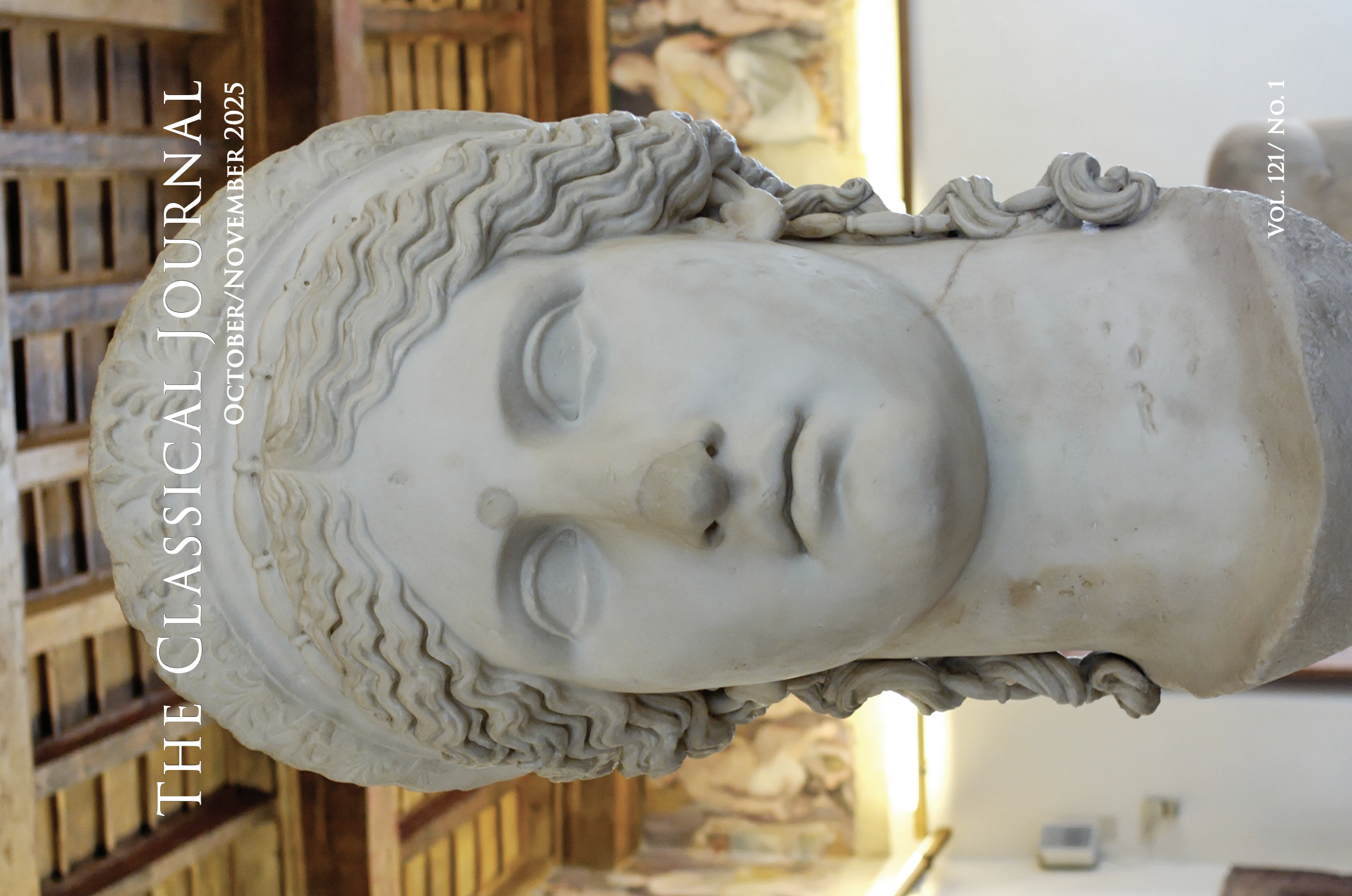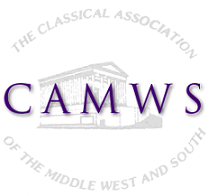The following articles are contained in CJ
117.1
Abstracts of Articles
PLATAEA PERFORMED: THE IMPACT OF AUDIENCE ON HERODOTUS’S HISTORIES
The Plataea narrative’s consistently negative portrayal of Sparta and correspondingly positive portrayal of Athens may reflect the narrative’s origins as a performance piece, originally recited for the Athenians and then adapted into written form for the ‘publication’ of the Histories. This hypothesis, which can be understood in terms of both recent and long-standing scholarship on epideictic orality and the Histories’ composition, helps to explain many of the most distinctive features of the narrative, especially its unwaveringly propagandistic approach toward Athens and its relation to Herodotus’s well-attested career as a performer.
TRISTIA 1 AND THE INCOMPLETENESS OF OVID’S EXILE POETRY
This paper argues that the contrast between ostensible closure and foreseeable continuation is a crucial feature of Ovid’s first exilic book. More broadly, the exiled poet’s longing for the end of his punishment is more and more challenged by the emperor’s alleged unwillingness to recall him—which forces Ovid’s Tomitan carmen to keep on going, thus making it ultimately incomplete.
TERRAE MOTU CONLAPSUM: A POST-EARTHQUAKE REBUILDING INSCRIPTION AT POMPEII IN IMPERIAL AND LOCAL CONTEXTS
The rebuilding inscription of N. Popidius Celsinus (CIL 10.846=ILS 6367) on the Sanctuary of Isis at Pompeii is one of the most widely published inscriptions from the city. I argue that the regularity with which it appears in modern scholarship masks its character, its full meaning, and the reaction Pompeiians would have had on reading it. The inscription is unprecedented in Pompeii and Campania—and extremely rare in the entire Roman world—as a post-earthquake rebuilding inscription not attributing rebuilding work to imperial authority. In this context it suggests a disruption of the pattern of imperial response to natural disasters, which had since Augustus been accepted as a responsibility of imperial government. Examining the surviving inscriptions of the Roman imperial period that mention earthquake damage certain patterns emerge. Emperors (and eventually their immediate families and appointed officials) rebuilt or claimed credit for rebuilding public buildings including temples, infrastructure, and amenities such as baths following earthquakes as an apparent matter of course. This historical context suggests a number of responses by the Pompeiians reading this inscription. Celsinus’ age has of course been commented on repeatedly, although it seems very likely that Pompeiians would have recognized the pattern of parents preparing for their son’s public career in a manner similar to the earlier inscription on the Eumachia building (CIL 10.810). Much more notable is the response by the decuriones to Celsinus’ beneficence. While not unprecedented for other forms of beneficence its inclusion here as an explicit quid pro quo seems to create a new category of welcome urban renewal in an area that had previously apparently been the sole purview of imperial government. Pompeiians familiar with dedicatory inscriptions could not have failed to read the implications for rewards for similar beneficence in the future. Furthermore, the rarity of the dedication and its response may serve to support a non-ironic reading of the famous statement of Macrobius about the competitive nature of politics at Pompeii.
CRUDELIS VINCIT PATER: OEDIPAL PATERNITIES IN STATIUS’ THEBAID
This article offers the first in-depth exploration of the poetic and political significance of dysfunctional paternities in Statius’ Thebaid. Moving beyond Virgil-centric readings of the poem, it argues that the description of the Thebaid’s kings as problematic fathers reworks the anti-heroic paradigm set by Ovid’s Cadmus (Met. 3–4) into an “Oedipal pattern” scrutinising the interplay between intrafamilial violence and political chaos. While illuminating the Thebaid’s engagement with the ideological environments and generic anxieties of Flavian Rome, the examination of these narratives also displays Statius’ reworking of past literary models through a sophisticated use of verbal and thematic intertextuality.


